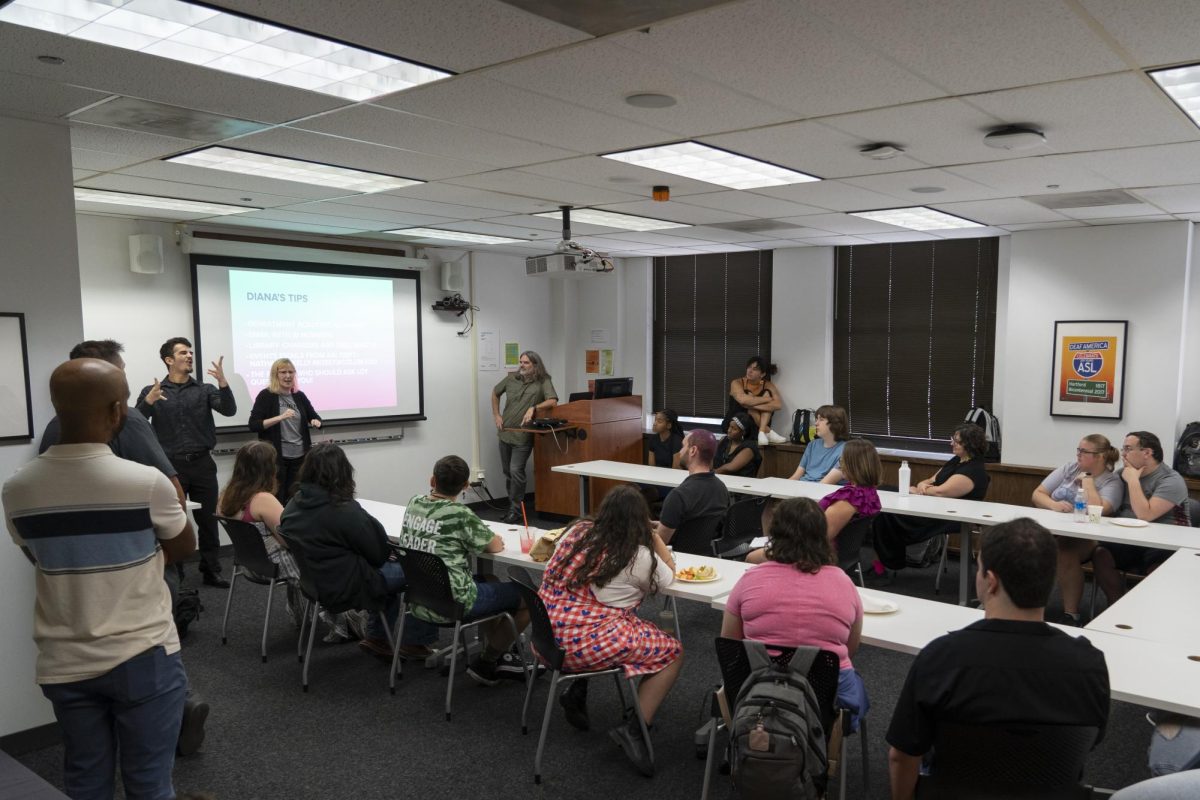Just after 7 in the morning on Sept. 27, Kevin Tiongson awoke when a tree landed on the roof of his house in Asheville, North Carolina. The tree also smashed his neighbor’s car. At that moment, the multimedia photojournalism Columbia alum realized the severity of the developing aftermath of Hurricane Helene.
After making landfall in Florida as a Category 4 storm the day before, Hurricane Helene brought severe flooding and power outages to Asheville, where Tiongson moved with his partner, Mackenzie Crosson, also a Columbia alum, in 2021. He has worked at the first and only Filipino restaurant in Asheville, Nengs Jr., since it opened in 2022.
“COVID brought me and Mackenzie down here from living in Chicago,” Tiongson said. “Just needed a slower pace and a place that was not as crowded. We love nature and wanted to live in the mountains. We moved out here sight unseen and it has been amazing.”
Tiongson, who was a photo and video editor at the Chronicle, has also worked as a freelance photographer and videographer since 2014.
The hurricane carved a destructive path across the southeastern United States, all the way from the Gulf Coast to the Appalachian Mountains. With maximum sustained winds reaching 140 mph, Hurricane Helene first struck near Panama City, Florida. The National Hurricane Center issued catastrophic flooding warnings, predicting rainfall accumulations of up to 15 inches in some areas.
Leaving a path of devastation across the states of Florida, Georgia, South Carolina and North Carolina, the North Carolina Department of Health and Human Services has confirmed 96 storm-related fatalities in the state. With people left unaccounted for or still missing, an increase in fatalities is expected.
The total number of deaths includes 49 in South Carolina, 33 in Georgia, 27 in Florida, 17 in Tennessee and two in Virginia.
Rick Di Maio, part-time instructor teaching meteorology and natural disasters classes, described the unprecedented damage.
“The destruction in that area is something that they’ve never seen before,” Di Maio said. “And unfortunately, it’s going to take years to reconstruct a town that was washed away. Infrastructure wise, sewer system, water, bridges, roads, railways, it’s literally from the ground up.”
According to Di Maio, Hurricane Helene reached its “maximum potential” just before landfall as it moved inland and westbound. This caused the top part of the hurricane, where the winds are generated from the east, to move perpendicular to the mountains of North Carolina. This acted as a catalyst for heavy rain, impacting the infrastructure of many homes such as Tiongson’s.
In the days before the landfall, Tiongson said the local government did not provide much notice, aside from evacuation notices that beeped into phones through the Integrated Public Alert and Warning System in some counties and low-lying areas with a history of flooding.
According to USA Today’s timeline, Buncombe County Officials declared a local state of emergency for low-lying areas on Sept. 26, including Asheville, but no evacuation was ordered.
At around 6:15 a.m. on Sept. 27, Buncombe County issued its own emergency warning, a mandatory evacuation order. This was just hours before the water rushed in.
“I thought we were sliding off our hill,” Tiongson said.
Di Maio said that the hurricane produced massive flooding due to the 12 to 15 inches of rain they received two days before the hurricane moved inland.
“We call that a precursor rain event,” Di Maio said. “We’ve noticed that some of these rain events are occurring a little bit more frequently and with a little bit more heavy rain due to the fact that the temperatures of the Gulf of Mexico are unusually warm for a longer period of time later in the year.”
Part-time instructor Mark Wollschlaeger, who teaches natural disasters and marine biology, said that this hurricane’s long-term effects are magnified by residents who have lost their homes and businesses.
“In the case of North Carolina, you’ve got loss of infrastructure,” he said. “We’ve got state highways that have completely washed out, which are going to probably take years to get the roads all built back to what they were.”
Wollschlaeger said that community resilience plays a massive role in these situations because the recovery efforts depend on “how close that community can stay together, and how well they can rally for each other as well as rally for their community.”
What stood out the most to Tiongson was the support within their community.
“Appalachia has been, throughout history, an area that has had to be self-sufficient,” Tiongson said. “That still holds true today.”
He recounted how, in the first five days, they were able to access drinking water from neighbors, breweries and resources outside the town long before the Red Cross, the Federal Emergency Management Agency, the city and the state reached them.
“In Asheville, at least, water distribution was set up many days later,” Tiongson said. “Radio broadcasts said the city supply of emergency drinking water was not accessible.”
Tiongson has applied for assistance from the Federal Emergency Management Agency but the application can take a few days to a couple of weeks to process.
“It was frustrating to have the local government not only not provide warning, but also fall short in supporting,” Tiongson said. “This has been largely a neighbor and volunteer effort to help each other.”
Tiongson’s work is heavily influenced by his background. Born and raised in Manila, Philippines, he sees similarities between what is happening in North Carolina and what is happening back home in the Philippines.
“The parallels that stick out to me are the hospitality and community-minded ways that people in Appalachia and the Philippines react to disasters and hardships. It has been humbling to see that,” Tiongson said. “Mutual aid and just neighbor-to-neighbor looking out for each other are most of what kept this area afloat – just like back home.”
Di Maio outlined ways climate change impacts the Gulf of Mexico’s temperatures, such as warmer water supporting intense wind and rain’s acceleration.
Di Maio explained that once a hurricane starts wind and rain attempt to cool down the top layer of water but due to the heat underneath the storm will help “continue to fuel the ability of the hurricane to remain warm and moist.”
Di Maio also observed that during Hurricane Helene, there was “a long, large plume of moisture coming in from the Gulf of Mexico all the way into parts of the Southeast, including the mountains of North Carolina and Tennessee.”
Typically, hurricanes like Helene produce heavy rainfall primarily south of a line from Atlanta to Raleigh-Durham, North Carolina, which is generally the northernmost extent of significant rainfall. However, the warming of the Gulf can extend the reach of this heavy rain further north than usual.
“This hurricane was really large. It was twice the size of normal hurricanes,” Di Maio said. “So when you have twice the size of a normal hurricane, usually the impacts can go much further inland.”
Just short of two weeks after Hurricane Helene hit, Hurricane Milton struck Siesta Key, Florida on Oct. 9. According to Wollschlaeger, there are “months to years” of recovery ahead, even after gaining national attention and bringing in donations and supplies from around the world.
“So Helene happens, and everybody’s focused on helping the people of Helene. And then, a month later, Milton happens,” Wollschlaeger said. “And so we turn our focus, the clothing drive, and the resource drive, which moves to the next talking point in the media.”
Wollschlaeger said that he urges communities to examine their resources and prepare for disaster response as often as possible. He also acknowledged the unforeseen circumstances of the hurricanes’ impact on North Carolina.
“No one in North Carolina would have ever envisioned that a hurricane would travel that far inland and create that large a spread of damage,” Wollschlaeger said. “I don’t think there was a way for them to prepare for the scale of this event.”
Copy edited by Vanessa Orozco











